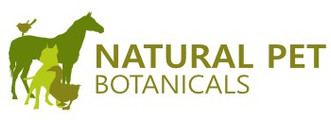Contains:
Formula 1.
Astaxanthin (Haematococcus pluvialis 0.1) – A natural antioxidant derived from microalgae, traditionally associated with cellular protection and vitality.
Club Moss (Lycopodium clavatum 200C) – Traditionally linked with balance in digestion and vitality.
Poke Root (Phytolacca 200C) – Traditionally regarded for supporting cleansing and balance in tissues.
Condor Plant (Cundurango 200C) – Traditionally associated with supporting the stomach and digestive comfort.
Ash Mineral (Hekla lava 12X, 200C) – Traditionally connected with balance in bones and structural tissues.
Ruta whole plant (Ruta graveolens 6C) – Traditionally regarded for its connection with flexibility and connective tissue support.
Calcarea Phosphorica (4X) – Traditionally associated with growth, strength, and resilience.
in 20% USP alc. in purified water.
Reference: https://www.healthline.com/health/poke-root
Reference: https://pubmed.ncbi.nlm.nih.gov/12639929/
Reference: https://pubmed.ncbi.nlm.nih.gov/15026348/
Formula 2.
Astaxanthin (Haematococcus pluvialis 0.1, 30X ) – A natural antioxidant derived from microalgae, traditionally associated with cellular protection and vitality.
in 20% USP alc. in purified water.
https://pubmed.ncbi.nlm.nih.gov/10798217/
https://www.sciencedirect.com/science/article/abs/pii/S0024320502015229
https://www.ncbi.nlm.nih.gov/pmc/articles/PMC4515619/
https://www.ncbi.nlm.nih.gov/pmc/articles/PMC6266165/
https://pubmed.ncbi.nlm.nih.gov/22080479/
https://pubmed.ncbi.nlm.nih.gov/30287735/
3. KIT Set of 4
1. CLOVE OIL 10ml
2. C.Oil 13-5(2)10ml Cumin Oil
3. Tumeric Paste JAR (no charge)
4. Blood Ease 197 formula 30ml
Formula 4.
Violet Leaves (Viola Odorata)
Blue Flag (Iris Versicolor)
Wild Indigo (Baptisia)
Red Clover (Trifolium pretense)
Parsley (petrolelinum crispum)
Comfrey (Symphytum officinale)
Cleaver Root (Galium aparine)
Poke Root (Phytolacca americana)
Olive Leaf (Olea europaea)
French Maritime Pine (Pinus pinaster)
in purified water & 30%-40% USP alc.
Medicinal Herbal Uses (Traditional and Historical Context)
Violet Leaves (Viola odorata) – Traditionally associated with cleansing and renewal, and valued for their gentle antioxidant qualities.
Blue Flag (Iris versicolor) – Traditionally regarded for supporting liver and glandular balance, and connected with natural detoxifying processes.
Comfrey (Symphytum officinale) – Traditionally linked with soothing and restorative qualities for skin and tissues, and noted for its calming mucilaginous properties.
Red Clover (Trifolium pratense) – Traditionally associated with purification, circulation, and renewal, often regarded as supportive during times of transition.
Cleavers Root (Galium aparine) – Traditionally connected with clarity, lymphatic flow, and gentle cleansing actions.
French Maritime Pine Bark (Pinus pinaster) – Traditionally valued as a potent natural antioxidant, associated with circulation, vitality, and resilience.
Fenugreek (Trigonella foenum-graecum) – Traditionally linked with nourishment, strength, and balance in the body’s natural processes.
Olive Leaf (Olea europaea) – Traditionally regarded for its cleansing and protective qualities, long valued for vitality and wellbeing.
Parsley (Petroselinum crispum) – Traditionally associated with digestive comfort, cleansing, and circulatory support.
Poke Root (Phytolacca americana) – Traditionally connected with balance in the lymphatic system and natural cleansing.
Wild Indigo (Baptisia tinctoria) – Traditionally valued for its strengthening and clarifying actions, and connected with resilience.
Practitioner Recommendation
Use the 318 formula in conjunction with
Glycine Amino Acid Powder
Glycine is a simple amino acid traditionally associated with supporting energy, vitality, and tissue balance. It is valued for its role in protein building, collagen formation, and general wellbeing.
Dosage Suggestion
Small Pets (Cats, Toy Dogs)
Dissolve 1 teaspoon of powder in 1 cup (approx. 240 ml) of filtered water. Stir well, then add 2 tablespoons to meals twice daily. Alternatively, stir 1 teaspoon into the water dish each time it is refreshed.
Medium to Large Dogs, Equine, Large Farm Animals
Dissolve 1 teaspoon of powder in 1 cup (approx. 240 ml) of filtered water. Stir well, then add ¼–½ cup into meals twice daily.
Farm Animals (Cows, Swine, Others)
Mix into molasses or sprinkle on feed as a treat. Alternatively, stir 2 teaspoons into the water dish or water trough each time it is changed.
Adjust amounts gradually over several weeks if needed.
General Notes
Glycine is traditionally associated with supporting muscle tone, recovery, collagen production, and overall balance in the body. It is also regarded as playing a role in maintaining digestive comfort and nervous system function.
Need more advice or have more questions? Contact us for a FREE consultation with one of our fully qualified practitioners.
These statements are for general wellbeing and educational purposes only. This product is not intended to diagnose, treat, or prevent any disease. Always seek veterinary or professional advice for specific health concerns.
DISCLAIMER
The statements made regarding these products have not been evaluated by the Food and Drug Administration. The efficacy of these products has not been confirmed by FDA-approved research. These products are not intended to diagnose, treat, cure or prevent any disease. All information presented here is not meant as a substitute for or alternative to information from your health care practitioners. The Federal Food, Drug, and Cosmetic Act require this notice.










